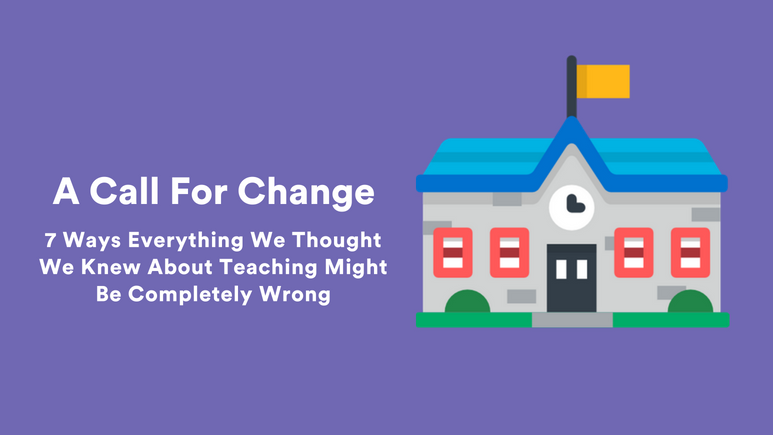
Our economy, job market, and society have changed a good deal in the past hundred years. Our schools, on the other hand, have remained essentially static.
Classroom organization, teacher-student relationships, school days and yearly schedules are all pretty much the same as they were a century ago.
And yet, much of the research around how children learn best proves that many of these traditions aren’t necessarily ideal.
Below are 7 ways that the traditionally organized school might not actually be serving students to the best of its ability.
Taking more breaks actually helps you learn faster.
Oftentimes we assume that students learn best when they are consistently focused on a task with no distractions.
Recent research, though, suggests something different.
A study of 600 business students found that “students who took regular breaks over an hour remembered a fifth more than those who sat through an hour-long lecture.”
Regular breaks spent doing something unrelated or talking about content instead of just listening or reading actually help learners retain information.
Students learn better later in the day.
Teachers and students alike can sympathize with the dread of hearing one’s alarm sound long before the sun is up.
Nonetheless, nearly all schools across the country begin by 8:00 am and many as early as 7:00 am.
Many scientists have proposed a simple idea to improve the academic performance of middle and high schoolers. Start the school day later.
Studies have found that teens who got an additional hour of sunlight before school (and thus more time to sleep) boasted slight improvements in math and reading scores.
This is due to the fact that the teenage brain tends to be more alert later in the day.
Dividing the day into subjects may disrupt learning.
Compartmentalized learning where the day is divided into discrete subjects may have served older generations just fine.
Unfortunately, this educational mainstay likely isn’t equipping younger generations with the skills they need to thrive in the workplaces of the 21st century.
As opposed to learning algebra, biology, and communication skills independently, students need to understand how these different fields of study are related.
Teachers are increasingly gravitating towards cross-curricular projects as a way to bring together different academic subjects into one assignment.
Playing is just as important as studying.
Traditionally, schools have weaned students off playing to learn by the time they enter elementary school.
Research is finding, though, that this might be a move in the wrong direction. As it turns out, play can be a powerful tool well after Pre-K.
For example, Boston Public Schools are in the midst of implementing a play-based curriculum in kindergarten classes across the city with hopes of expanding the program to older grades as well.
Bottom line: you’re never too old to benefit from play!
All students should not be treated equally.
What’s the difference between treating all students equally and treating all students fairly?
When we treat students equally, we give each student the same thing.
When we treat students fairly, we give each student what he or she needs to be successful.
At the end of the day, students are not all equal, so it hardly makes sense to treat students the same.
Luckily, the vast number of individualized learning platforms that exist are making it easier and easier for teachers to customize instruction to meet every student’s needs.
Sitting at a desk can interfere with learning.
In 2017, a story filled the media that sitting down for long periods of time can be detrimental to your health, even if you exercise regularly.
While the shocking news speaks mostly to adults, it sheds light on the fact that sitting for long periods of time isn’t healthy (or natural) for kids either.
And yet, most of our nation’s classrooms still revolve around desks and chairs in neat rows or clusters.
Some schools are starting to realize that letting students move around during class time isn’t necessarily a distraction. In fact, it can actually help learning.
While there isn’t extensive research on this theory yet, many schools have found that giving kids choices about where and how they sit, and building movement into lessons makes learning much more productive and enjoyable.
The teacher’s main job is not to teach content.
Education is not the filling of a pail, but the lighting of a fire.
This quote is certainly not new, but it still seems novel in comparison to how most classrooms work.
There continues to be a pervading understanding that a teacher’s job is to teach skills and content.
More and more educators know that the best teachers don’t really do all that much teaching.
Instead, they act as coaches, providing students with the resources and soft skills necessary to teach themselves.
The best way to do this? Build students’ intrinsic motivation and then be prepared to mentor students through their own learning process.
Whether you’re an educator or an administrator, consider the ways in which you can bring your school into the 21st century to help boost student achievement.



Leave a Reply